On a remote stretch of water just outside Whitehorse — the isolated capital of the Yukon territory in Canada — you gather onto a dock to load gear into a floatplane. Around you, each face in your group flashes a look containing both eager excitement and anxious nervousness as they await the call to board the plane and transport to the starting point for a unique opportunity to paddle one of North America’s longest rivers: the Yukon River. In addition to supporting the plane, the hollow floats also contain much of the gear you’ll use over the next few days. Once loaded, the pilot taxis away from the shore, and almost immediately, the plane is dancing across the water and building speed. Just like that, you’re airborne and beginning the short flight across Lake Laberge.
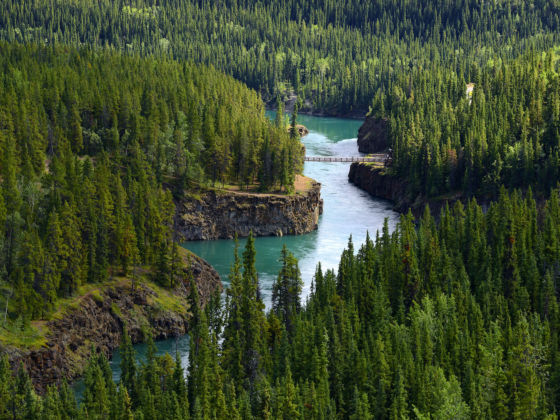

How to Paddle Your Way Through the Yukon River in Canada
Near the mouth of the lake, the plane takes an exhilarating dive, and the pilot gracefully lands the plane on the Yukon River. After unloading on the shoreline, the pilot pushes away from shore and is once again airborne and gone in a few seconds.
That leaves you, your group, and your guide ready to start your adventure: four days of paddling on the Yukon River, floating for nearly 140 miles on stand-up paddleboards, or SUPs. Once the boards are inflated and the dry bags and food barrels strapped to the boards, the trip begins. Paddling on the the Yukon River is an unforgettable experience and one of the most unique ways to experience the striking vastness of Canada’s north. Here’s how to make it happen, even if you’d rather paddle for an afternoon instead of the better part of the week.
Where is the Yukon River?
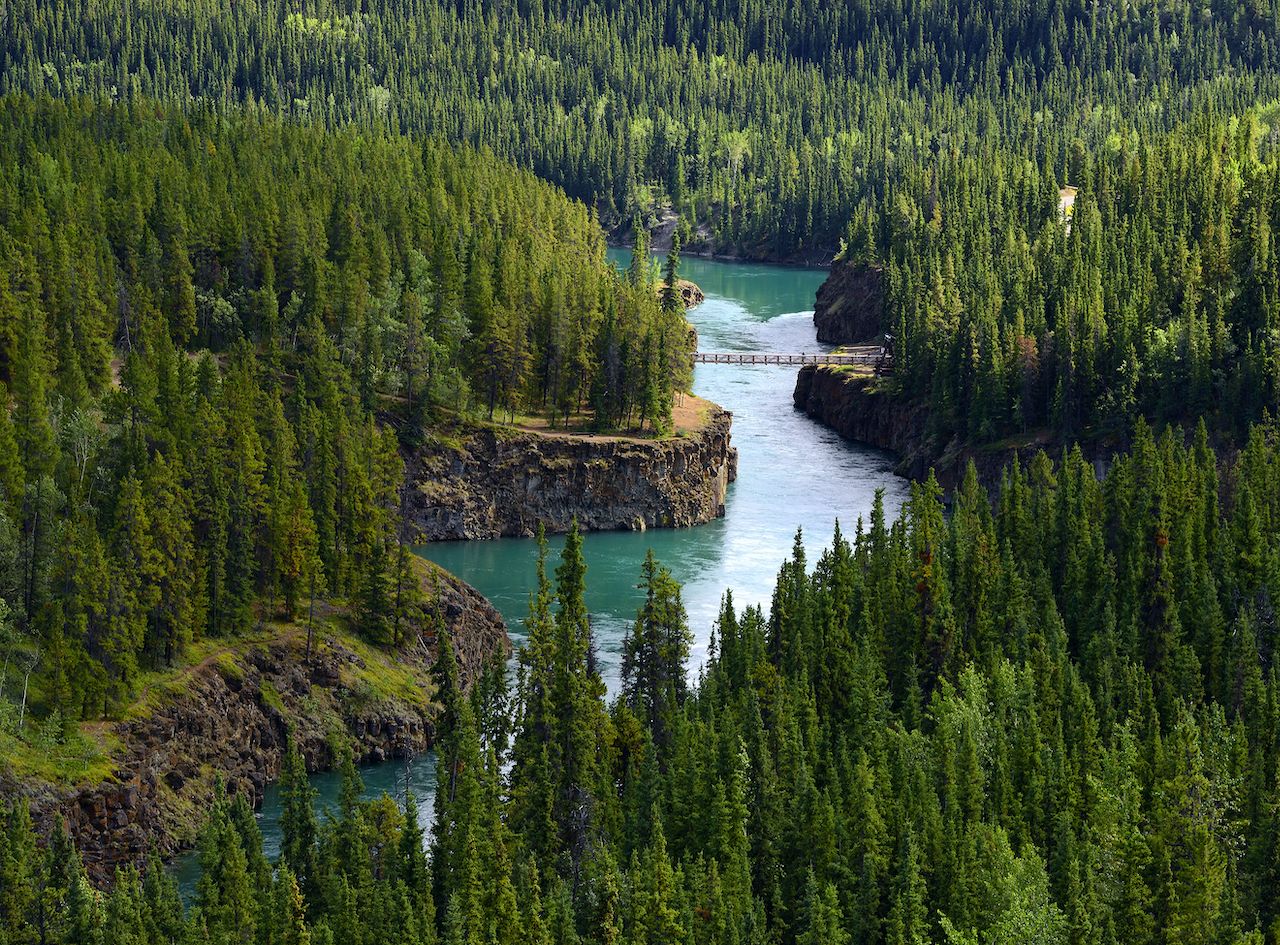
Photo: Pecold/Shutterstock
The Yukon River is the third-longest river in North America. Its wild course begins in northern British Columbia and flows northwest through the Yukon and into Alaska before emptying into the Bering Sea over 2,000 miles later. This means that you’re actually traveling north-ish during the trip, pushing further from urbanity with every stroke of the paddle.
In the late 19th century, gold was discovered in the area around the river, and fortune seekers flocked to the territory, kicking off what was dubbed the Klondike Gold Rush. While the quest to find the shiny metal would dwindle, the river would remain the highway of the region for more than 50 years. Paddle-wheel riverboats that once traveled the waterway have been replaced with canoes, kayaks, and, in recent years, even stand-up paddleboards. This vital waterway has a history far deeper than modern Canada.
Why travel by inflatable SUP?
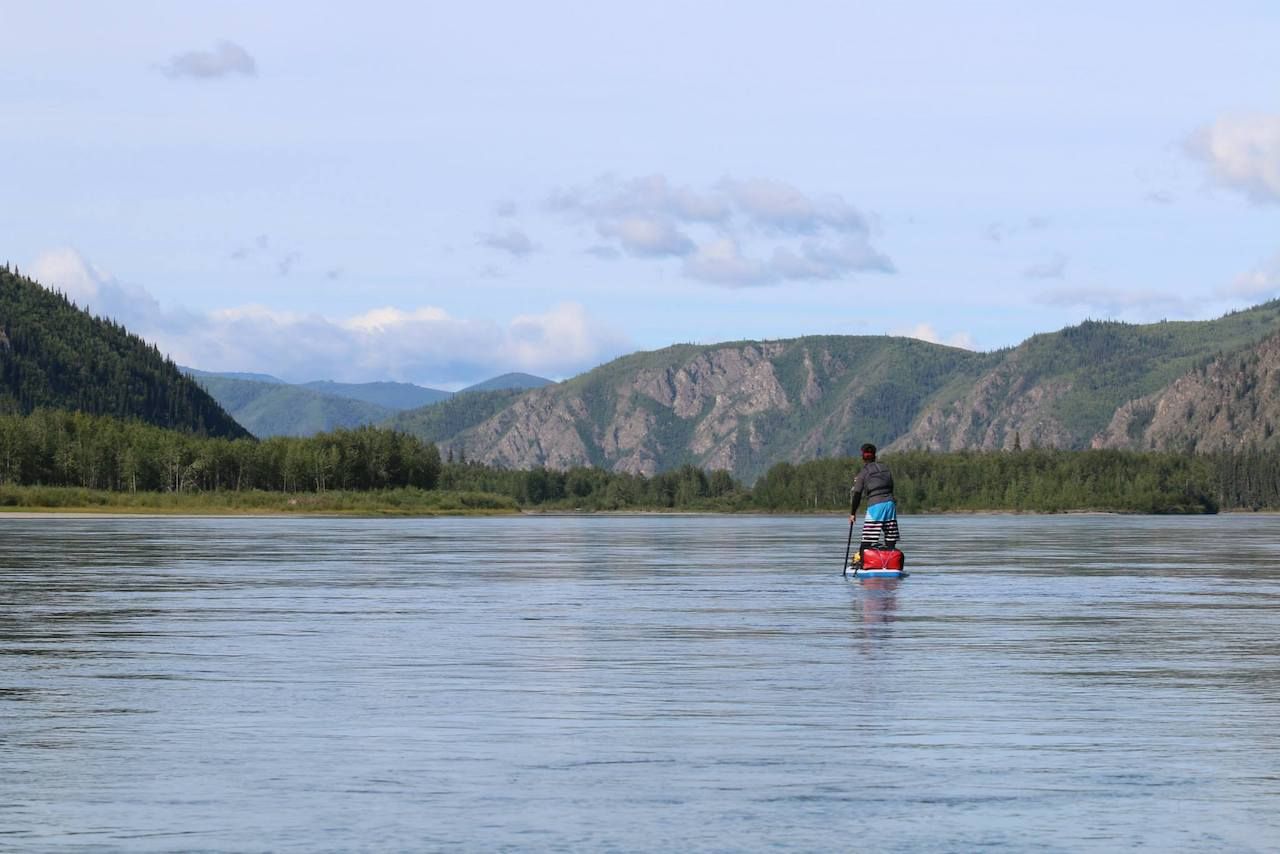
Photo: Stand Up Paddle Yukon/Facebook
Unlike kayaks, which confine you to a cockpit and have limited cargo space, SUPs have large decks that allow for more gear, and paddlers have the ability to move around while on the water. Over the course of a four-day trip, this extra bit of mobility will prove immensely valuable as you can stretch your legs, move from standing into a kneeling position as needed. And because you’re standing, it’s a lot easier to look around and enjoy the views.
The boards used for this adventure are quite stable, and you can sit or kneel when you go over turbulent water. Stand Up Paddle Yukon is Whitehorse’s only SUP guided service and will escort you on the trip using boards from Red Paddle Co. The company can take care of the logistics (permits, food, gear rentals, etc.) that are impossible to plan from your living room thousands of miles away.
SUPs are ideal for exploring long stretches of relatively calm water because they are much easier to navigate than other boats, with the added bonus that you can easily change directions, turn around, or even bail off the board should the need arise. They come in an array of sizes. The tandem, just as its name implies, allows two paddlers to ride on the same board with gear strapped in two separate locations. It’s kind of like a tandem bike, kayak, or another piece of tandem athletic equipment except that, again, you still have the mobility. The solo boards used on the trip can carry one paddler with gear and are encouraged for more experienced riders.
Here’s the real beauty of the boards, though. When not in use, they deflate and can be rolled up and stashed in a bag that can even be checked for flights to your favorite paddling destinations. This will prove extremely important for the trip as the rolled-up boards are easily placed inside the plane and the hollow floats for the flight to the starting point of the trip. Huckleberry Finn, Mark Twain’s classic character, would have gladly traded in his raft for the opportunity to travel on a SUP.
What to expect each day on the Yukon River
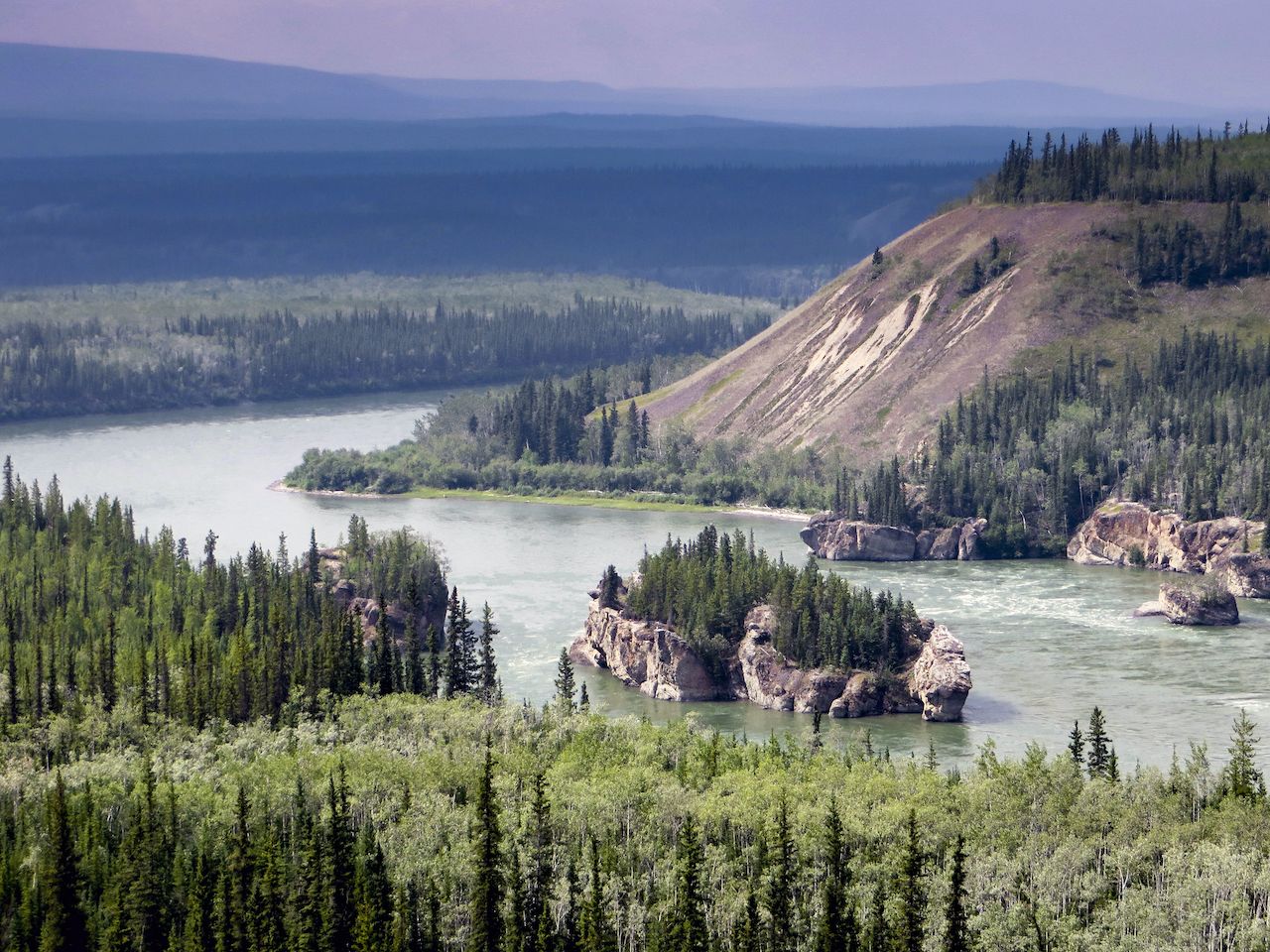
Photo: Salvatore Chiariello/Shutterstock
The Yukon is located in the subarctic and thus has long, cold winters and brief, dramatic summers. Tours run from June to September, and each month can provide a unique and varying experience. Nighttime temperatures range from cool to cold though July and August — the middle of summer — are the warmest. Wildlife abounds in this northern ecosystem with the possibility of bear, moose, porcupine, and wolf sightings, as well as a multitude of bald eagles that patrol the waterway. Watch closely as you may get to experience them pluck their next meal from the river as you paddle in relative proximity to the action.
Whitehorse, the capital of the Yukon, sits just north of British Columbia — just under two hours from the border. This once-bustling mining town will be the start of your river quest. While a few airlines provide service to the Great White North, Air North is the Yukon’s official airline and provides daily service from multiple cities, including Vancouver and Calgary. After inflating and loading the SUPs, your adventure downriver begins, and you are going to be off-the-grid for the remainder of the trip. The river moves pretty quickly on its own, and it’s possible to make forward progress just keeping the nose of the board pointing downriver. But, of course, you’ll paddle. And paddle more. Your itinerary will likely look much like this:
Day 1
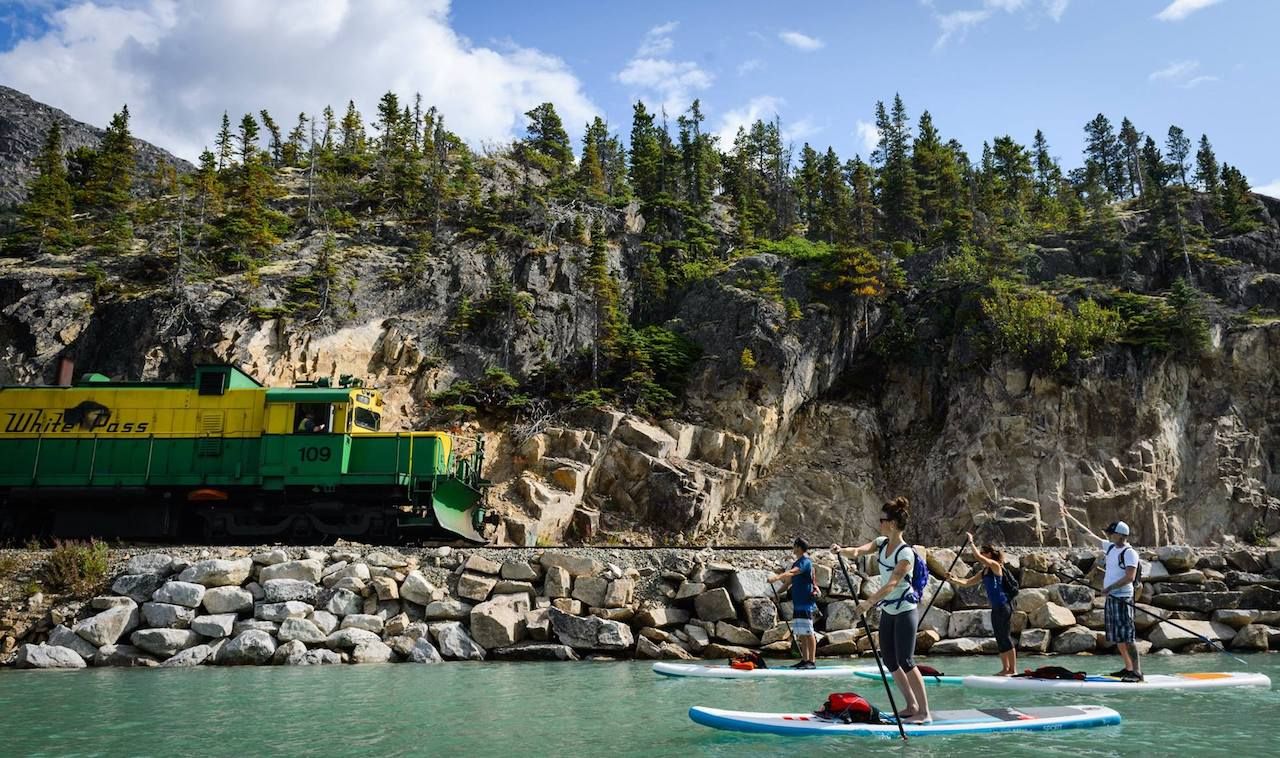
Photo: Stand Up Paddle Yukon/Facebook
After casting off and beginning your trip down the river, constantly scan the riverbanks for signs of wildlife. It won’t be long before you see your first bald eagle standing vigilantly in a tree. Lunches on the river can involve going ashore or connecting the boards together for a flotilla-style meal as you continue making progress downriver. Be conscious of the fact that you are surrounded by First Nations’ land.
Near the end of the first day on the river, your guide will motion you to head ashore to visit what remains of the river town of Hootalinqua. Here you’ll see evidence of the pioneer lifestyle in the old homesteads and buildings that remain from a bygone era. Don’t get too comfortable just yet as this is not your campsite for the night. After checking out the town, you will climb back aboard for another short jaunt down the river to the former site of the Hootalinqua Shipyard. Here you’ll camp in the shadow of the S.S. Evelyn, a sternwheeler that once carried passengers and goods between the towns along the Yukon. Her glory days have since passed, and more than a century of being dry-docked and abandoned to the elements have taken their toll on her. You’ll set up your tent and prepare for your first night in the wilderness while your guide begins the task of preparing the gourmet meal that traveling by water allows. After a solid day on the river, it’s easy to doze off comfortably in your tent as the ghost ship stands like a sentinel over your camp.
Day 2
Unlike backpacking trips that often require breaking camp early to cover the mileage to your next camp, river trips can be more flexible in allowing a casual start to the day. You’ll begin the second day on the water with a fully cooked breakfast and time around the campfire to reflect on the history of this campsite and the hundreds of people that once worked in the very spot you’re camping at over 100 years ago. After a leisurely start to the day, you’ll be back on the water, the current assisting your efforts down the river. Over the years, forest fires have ravaged sections along the riverbank, and the charred past remains evident as you pass through the affected areas. Since the growing season is short, new growth is slow to emerge, and the skeletal remains of the trees remain blackened and upright as a reminder of a heated past.
Though largely still intact, the S.S. Evelyn isn’t the only visible remains of the once-mighty sternwheelers that navigated these treacherous waters. The hulking remains of another boat become evident as you approach a sandbar in the middle of the river. Guide your SUP ashore and walk over to explore what remains of the main deck that sits exposed while the hull remains largely buried in the river sediment. While perhaps the longest day on the river, it ends similarly to the first day in that you camp along the shore of the river and drift off as the river continues to flow past, creating a natural white noise.
Day 3
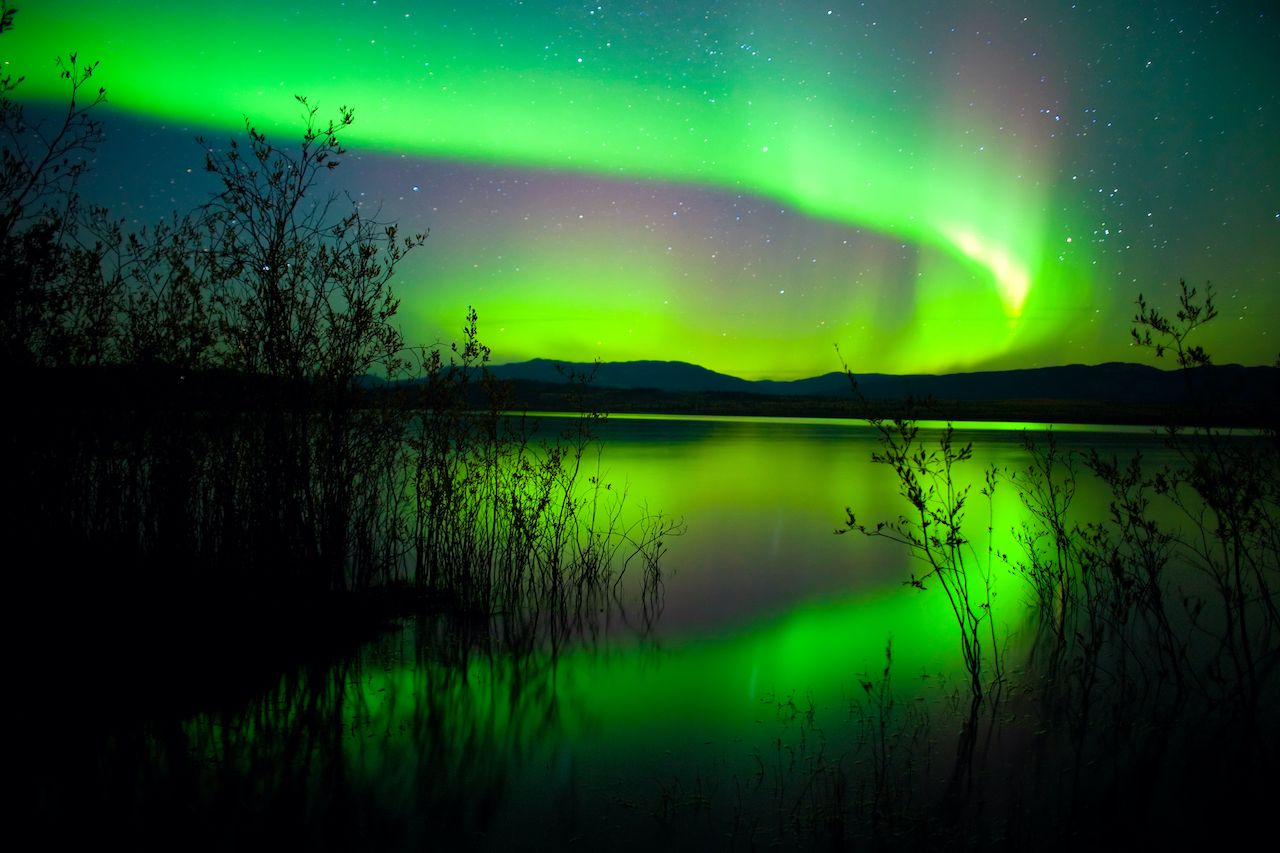
Photo: Pi-Lens/Shutterstock
This will be your last full day on the river, and your guide is likely to pull out all of the stops (much to your surprise). You continue to paddle, alternating between sitting and standing, as you meander your way down the river perpetually glancing at the shoreline and the hillsides hoping to spot more of the indigenous wildlife. At one point, your guide will motion the group over to the left-hand side of the river, and though it appears someone has already claimed this campsite, this is actually your camp for the night, and you’ll have to keep from letting out a hoot of joy when you see the collapsible hot tubs erected along the river.
Propane tanks will have the water warm while a myriad of drinks chill in the cold water of the river. There is no need to wait while the makeshift kitchen is set up and dinner is prepared as another guide has come downriver in a small boat equipped with a dinner prepared ahead of time and ready to be served. You quickly eat with the anticipation of what lies ahead. After shedding your apparel in favor of your swimsuit, walk across the sandy beach area and immerse yourself in one of several hot tubs. As the sun begins to drop behind the mountaintops and the stars begin to appear in the clear Canadian sky, it’s hard not to wonder if the day could be any more perfect, though depending on the patterns of the northern lights, it might.
Day 4
As you climb aboard your SUP for the last time, there still remain many miles between you and the takeout at a public campground in the town of Carmacks. Once you climb the riverbank, you deflate the SUPs and load the gear into the van to begin the drive back to Whitehorse. And while the trip may be over, there’s still plenty to discuss on the road back.
And if four days on the river isn’t quite enough, you can opt for a longer trip and travel all the way to Dawson City. This option will take an additional few days and will require a resupply along the river.
What to wear
The month you set out will likely determine the apparel needed. At minimum, consider choosing a water shoe like the Chaco Torrent Pro paired with a neoprene sock or just opt for a neoprene boot. The wind on the river is cool, and it’s smart to wear a light jacket or keep one handy while on the river. All gear and apparel are stored in dry bags to ensure you haver dry clothes when you’re off the river (and you’ll appreciate warm, dry socks for the end of the day at camp).
If you wear sunscreen, make sure it’s a reef-safe option. And if you want a rain jacket, check out the real-world testing Matador’s editors did on some of the most popular Patagonia rain jackets.